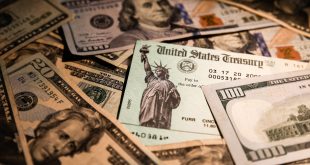Tensions between Ukraine and Russia escalated all along the five trading days. This was sending markets into a flux with the usual risk assets and currencies responding in a mixed manner.
There was news that a Russian attack on Ukraine could begin any day and would likely start with air strikes. White House national security adviser Jake Sullivan said on Friday. However, while the US says Russia has all the forces in place to launch military action, Russia has repeatedly said it has no such plans.
Russia denies any plan to attack Ukraine, and foreign intelligence chief Sergei Naryshkin has condemned ‘dangerous lies’ being spread by the US and in Western capitals.” President Vladimir Putin has threatened “appropriate retaliatory military-technical measures” if what he calls the West’s aggressive approach continues which could jeopardize Europe’s entire security structure, this is why financial markets have paid close attention to weekend developments.
Currencies
The possibility of steeper interest rate hikes has been a source of continued worry among the majority of traders and investors throughout the week.
As for forex, the yen has picked up a bid with the JXY index ending Friday 0.49% higher. The index that measures the strength of the JPY against a basket of other currencies. USD/JPY ended down 0.47% to 115.41 falling from a high of 116.17.
AUD/USD was lower by 0.50% as well to 0.7130, with its bullish potentially coming to a swift end. The AUD price action has been helped along by the Russian risk and a turn in US equities as well as risk sentiment:
Wall Street
The S&P 500 ended lower by 1.9% to 4,418.64 and fell 1.8% for the week. The Nasdaq Composite lost 2.8% to 13,791.15 and declined 2.2% for the week and the Dow Jones Industrial Average pulled back by 1.4% to 34,738.06, ending the week 1% lower.
Oil
West Texas Intermediate crude oil surged by 4.5% to $93.93 a barrel and the global benchmark Brent crude was also advancing by 4.1% to $95.15 per barrel. This is a dangerous scenario for global markets considering the onset of uber high inflation data of late and the proposed aggressive resolve from global central banks.
According to the University of Michigan’s preliminary February Consumer survey, the Consumer Sentiment Index fell to 61.7 in February, well below expectations for a slight rise to 67.5 from 67.2 in January. That marked the lowest such reading since October 2011.
As for markets’ reaction, poor consumer sentiment data has failed to shift the dial for the US dollar, with the DXY continuing to trade sideways in the 95.80s, where it trades broadly flat on the session. Sentiment continued its downward descent, reaching its worst level in a decade, falling a stunning 8.2% from last month and 19.7% from last February.
The hot US Consumer Price Index report had already increased odds for a 50bp hike from the Federal reserve and talks of an emergency interest rate meeting and action before March’s FOMC convenes to decide on the best course of action. However, energy prices would be tactically vulnerable to a de-escalation in Russian-Ukrainian tensions. President Joe Biden said Thursday he sees signs of relief on the horizon for US consumers, after a government report showed inflation staying at a 40-year high.
Gold
Gold jumped on to a near two-month peak as concerns over surging inflation and the drums of conflict lifted demand for the safe-haven metal. Spot gold ended 1.77% higher to $1,858.98 per ounce and hit its highest level since Nov 2021.
US gold futures settled up 0.3% at $1,842.1. Gold is considered a hedge against soaring inflation and is often used as a safe store of value during times of political and financial uncertainty. Without sustained buying flow, gold prices are likely to go ahead to the substantially higher real rates amid hawkish language from the Federal Reserve.
Cryptocurrencies
Bitcoin and other cryptocurrencies advanced on Wednesday, reversing an earlier pullback. Stocks were also higher, partly due to the decline in Treasury bond yields.
Trading volume is starting to tick higher, but still below January highs. Most cryptocurrencies have been significant gainers in the last 24 hours, potentially signaling the market’s risk-on appetite.
Still, futures market data continues to suggest a neutral bias among traders. That means markets could remain indecisive about the next momentum-driven move, at least for the short term.
 Noor Trends News, Technical Analysis, Educational Tools and Recommendations
Noor Trends News, Technical Analysis, Educational Tools and Recommendations





